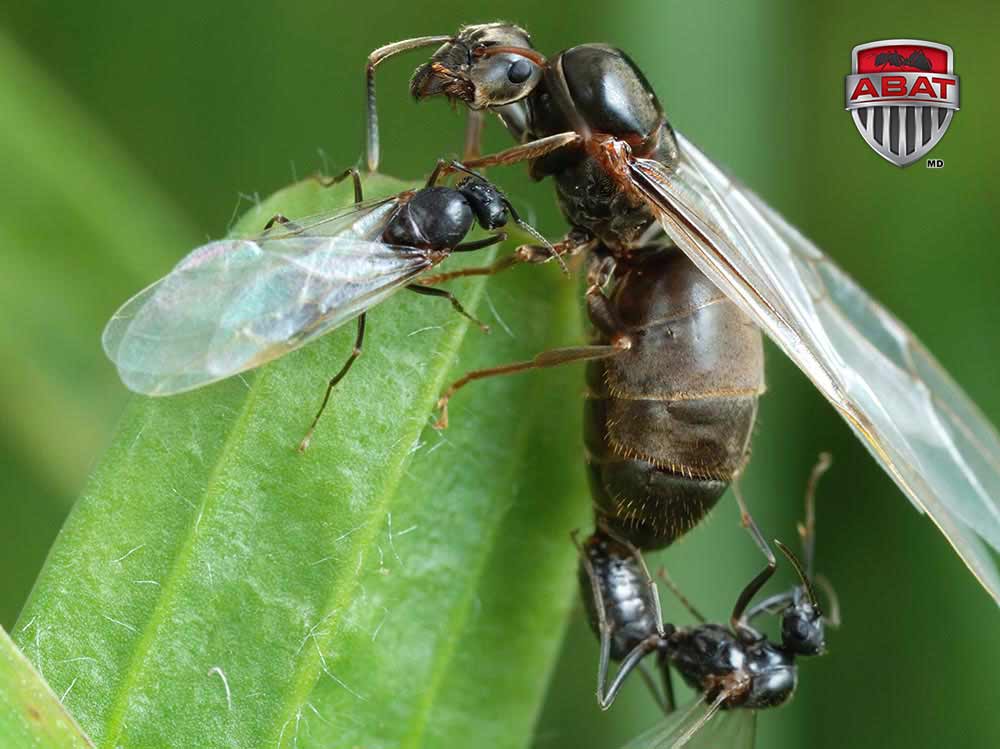| French name | Fourmis noire des jardins |
| English name | Black garden ant |
| Latin Name | Lasius niger |
| Class | Insecta |
| Order | Hymenoptera |
| Family | Formicidae |

This species of ant (Lasius niger) is widely found in parks and gardens, but also in kitchen cupboards where it goes looking for food. The black ant is predominant both in urban and residential areas and in cultivated fields.
It must be pointed out that the higher the temperature, the more it is active. Therefore, it is very noticeable in the Island of Útila in Honduras, as well as in California and the beaches of San Francisco. Because of its black color, it can sometimes be confused with the black carpenter ant (Camponotus pennsylvanicus) or the field black ant (Formica glacialis).
This ant is very easy to identify: it has hair on the scape (basal joint) of its antennae and on its clypeus (broad plate at the front of its head).
Be careful – this ant can sometimes use its mandibles to bite and defend its nest, but it can’t sting as it has no stinger.
The black ant is an invasive species and can cause damage to your home.
If you're not sure about the kind of ants that are invading your home, please check this articles
Situations requiring the services of our expert
You own a home on the Island of Útila
The black ant is omnivorous, it eats anything: sugar, cake, fruit, flour, fat, etc. It can even raise aphids to collect and feed on their excretions.
The black ant doesn’t usually construct its nest inside a house, but it can invade it in order to find something to eat. This is why they are often found in kitchen cupboards seeking food, especially sweets. It can also be very damaging in gardens and cultivated fields by drying out the plants and destroying roots. It can make its nest under stones or slabs, or even in crawl spaces.
If you own a home in Honduras or a nearby island, it is in your interest to detect the presence of black ants in order to act quickly by contacting a pest control management expert.
Sightseeing in a hot country
Needless to say, ants are small enough to sneak into your suitcase and start a nest in your clothing. Our experts have developed a process to prevent this problem: your luggage is inspected and your effects packed in air tight bags, thus leaving no space available to insects’ intrusion. It would really be unfortunate to bring undesirable insects back to your home!
You are a professional in Honduras
Black ants can cause very serious damage in a garden, but they can also invade a grocery store, a restaurant, a hotel’s structure, etc. Our team, specialized in pest control management, will act to eliminate an infestation of ants, cockroaches, bed bugs or other invasive insects. Every measure is taken to act quickly and as discreetly as possible so as not to affect your reputation.
A few tips from experts in pest control management
To act efficiently, the ants’ nest must first be located: it looks like a mound in the grass or underneath stones. If the anthill is outdoors, the pest control management expert will use an approved insecticidal treatment to completely destroy the nest. Afterward, this same product (often in powder form) is spread around the house, at the base of the foundations, in cracks, pipe work, etc., in order to prevent the ants from entering the home.
The exterminator is an expert in the use of products so that your plants or pets are not harmed or contaminated. If the infestation is located outdoors, the professional can treat the problem in your absence, before you arrive. If this is your situation, don’t hesitate to call our offices to schedule an appointment at a date and time that are convenient for you.
Here a few simple tips to repel ants:
- Regularly clean kitchen cupboards and pantries, as well as the washroom (often becomes humid)
- Vacuum behind electrical and household appliances, including dark, warm and humid areas that facilitate the growth of insects (ants, cockroaches, silver fish, etc.)
- Use a washcloth dipped in bleach or alcohol vinegar, as insects instinctively avoid these odours
- Don’t leave dirty dishes piled up in the sink over several days
- Store food out of the insects’ reach and in air tight containers
- Empty the trash regularly and keep the trash bin tightly closed
- From time to time, use a steam cleaner to clean nooks and corners
Habits and life cycle of black ants
As for all species of ants, these insects are social and live in colonies. Black ants reproduce at the end of spring, during a nuptial flight that occurs in swarming; if the weather is hot and humid, the swarm will be particularly large. The climate in Honduras is therefore perfect for the reproduction of black ants. Males die immediately after mating. Workers are about 3 mm in length and the queen can reach up to 11 mm in length.
Queens lose their wings and go underground to hibernate in winter. They start to lay eggs in spring, and the eggs hatch within four weeks. The hatched eggs become nymphs, then workers that will tend the anthill.
The black ant’s complete life cycle, from laying to pupation, lasts about two months. The nest is monogyne, meaning it has only one queen. The queen can live up to 15 years, but the nest disappears when she dies; the workers generally have a life span of three years.


